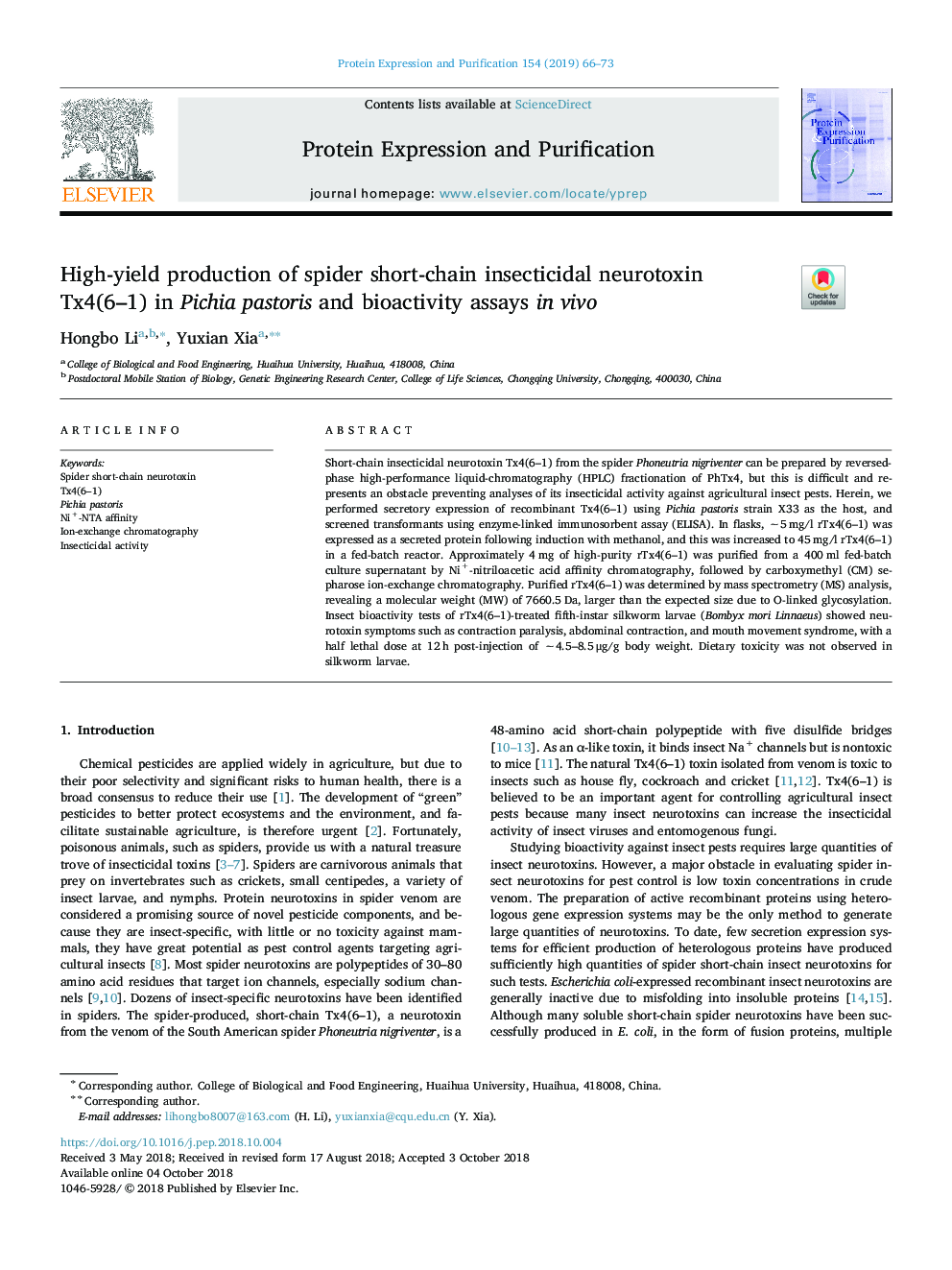| Article ID | Journal | Published Year | Pages | File Type |
|---|---|---|---|---|
| 11019567 | Protein Expression and Purification | 2019 | 8 Pages |
Abstract
Short-chain insecticidal neurotoxin Tx4(6-1) from the spider Phoneutria nigriventer can be prepared by reversed-phase high-performance liquid-chromatography (HPLC) fractionation of PhTx4, but this is difficult and represents an obstacle preventing analyses of its insecticidal activity against agricultural insect pests. Herein, we performed secretory expression of recombinant Tx4(6-1) using Pichia pastoris strain X33 as the host, and screened transformants using enzyme-linked immunosorbent assay (ELISA). In flasks, â¼5â¯mg/l rTx4(6-1) was expressed as a secreted protein following induction with methanol, and this was increased to 45â¯mg/l rTx4(6-1) in a fed-batch reactor. Approximately 4â¯mg of high-purity rTx4(6-1) was purified from a 400â¯ml fed-batch culture supernatant by Ni+-nitriloacetic acid affinity chromatography, followed by carboxymethyl (CM) sepharose ion-exchange chromatography. Purified rTx4(6-1) was determined by mass spectrometry (MS) analysis, revealing a molecular weight (MW) of 7660.5â¯Da, larger than the expected size due to O-linked glycosylation. Insect bioactivity tests of rTx4(6-1)-treated fifth-instar silkworm larvae (Bombyx mori Linnaeus) showed neurotoxin symptoms such as contraction paralysis, abdominal contraction, and mouth movement syndrome, with a half lethal dose at 12â¯h post-injection of â¼4.5-8.5â¯Î¼g/g body weight. Dietary toxicity was not observed in silkworm larvae.
Related Topics
Life Sciences
Biochemistry, Genetics and Molecular Biology
Biochemistry
Authors
Hongbo Li, Yuxian Xia,
